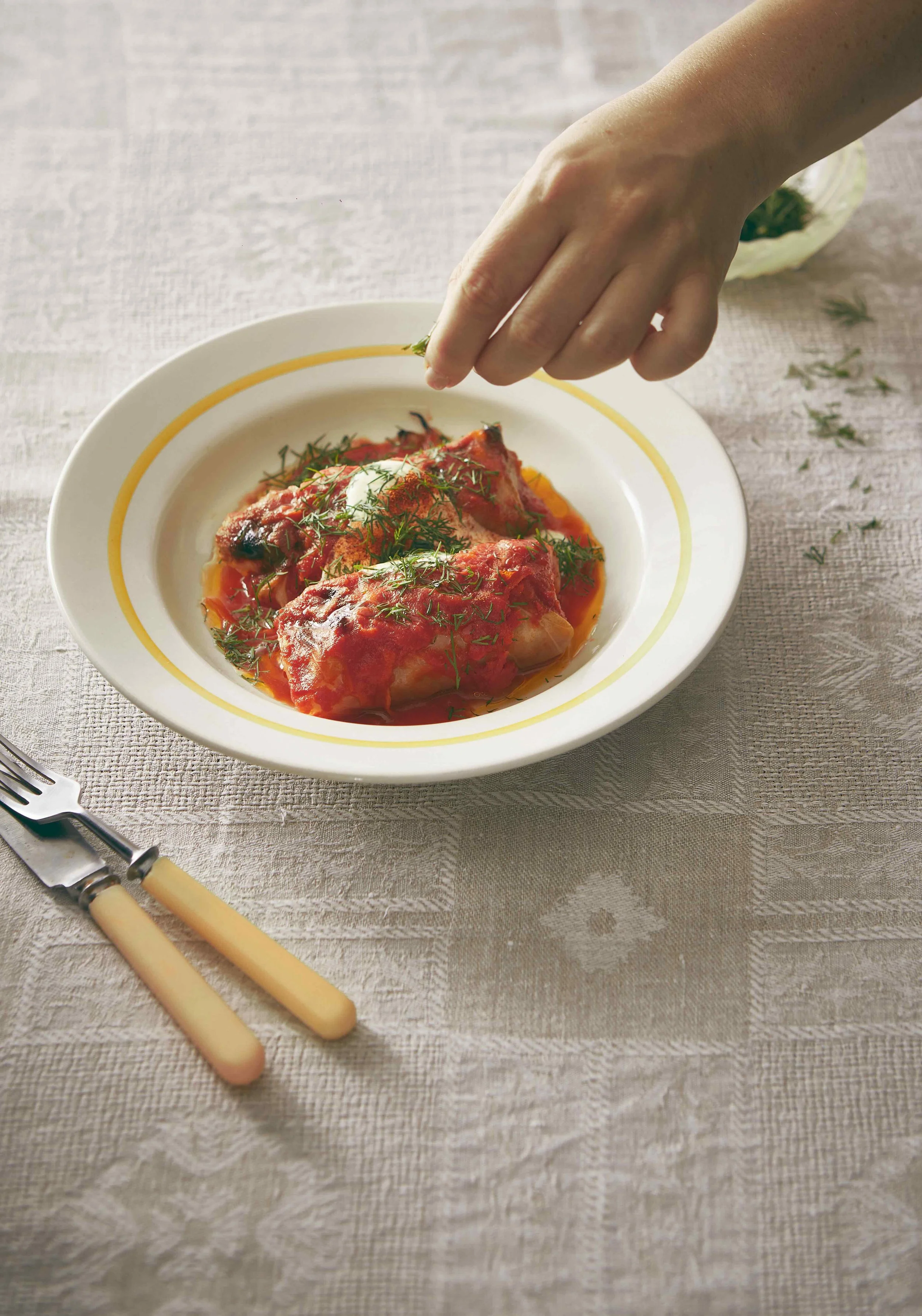Fennel, egg and anchovy salad
Can we have a ‘heck yeah!’ from the crowd for the mighty mandoline? We love this labour-saving slicing device SO MUCH; it might well be our fave kitchen gizmo ever. It makes short work of precision cutting, giving prep that professional, consistently neat edge. Plus, a mandoline considerably shortens time spent hunched over a chopping board – it’s sharp, it’s fast, it’s handy. From thinly slicing cucumber, radishes, root veggies and cabbage, to cutting potatoes for fries, shredding cheese, julienning carrot and so many other uses, it makes short work of many tedious jobs. We particularly appreciate the way it can shave; you simply couldn’t cut the fennel in this recipe quite as thin without one. What we don’t particularly appreciate is how these things can bloody slice fingers off if you’re not careful… did we mention mandolines are crazy, razor-sharp?
We reckon a mandoline is essential kit and we own different types. Essentially there are two main varieties; handheld and bench top. As the name suggests, bench top ones sit up on your bench, have more moving parts and are arguably the most useful. They also cost more. Handheld ones are simpler and more compact but you need to hold them upright at one end while using your other hand to do the slicing stuff. Blade styles differ too; they’re either horizontal, V-shaped, or diagonal. Horizontal blades are best for hard veg like potatoes and beetroot, V-shaped ones can handle softer veggies better (although these types can be harder to sharpen), while a diagonal blade sits somewhere in between. All but the simplest mandolines allow for adjusting the blade for various slice thickness and some have interchangeable blades for crinkle cutting, julienning, making chips, or even making fine waffle-cuts.
As mentioned, a mandoline can inflict spectacular cuts to your fingers and they don’t all come with a hand guard either. So BE CAREFUL when using one. But look at what you can do with one! This unfussy, elegant salad virtually makes itself; all you need are a few boiled eggs, some anchovies, a quick dressing and a mandoline to shave. Simple.
Serves 4-6
1 large head fennel
1 bunch watercress, sprigs picked
6 hard boiled eggs
6 anchovies
Lemon dressing
1 large egg yolk
2 tsp Dijon mustard
1 large garlic clove, coarsely chopped
2½ tbsp lemon juice, or to taste
200ml extra virgin olive oil
1 tsp finely grated lemon zest, or to taste (optional)
For the lemon dressing, combine the egg yolk, mustard, garlic and lemon juice in a tall container, then, using a stick blender, blend to combine well. Alternatively, you can use a small food processor. Blending constantly, add the oil a little at a time to emulsify. Add the lemon juice to taste and enough warm water to thin the dressing to a thick, creamy consistency. Season to taste with salt and pepper, plus some finely grated lemon zest if you like things with a real lemon kick.
Using a mandoline or a large, sharp knife, very finely shred the fennel. Combine in a large bowl with the watercress, season with salt and pepper, then drizzle over enough dressing to lightly coat. Toss gently. Place in a large bowl or on a platter, nestle in the eggs, place an anchovy over each egg, then serve, with any extra dressing passed separately.









